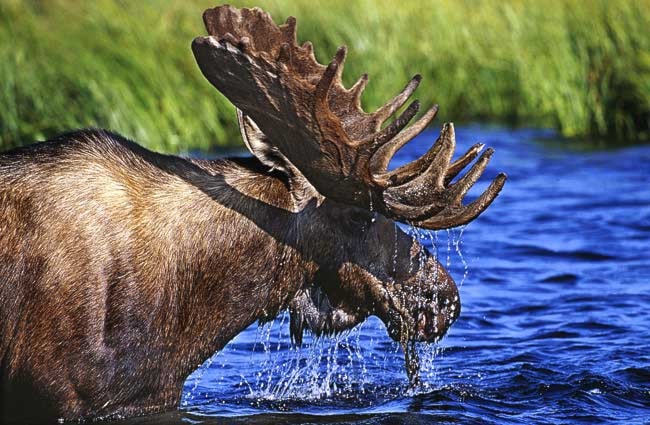There are about 1,352 moose in the Nisutlin area, but the number of bulls, compared to the number of cows, is almost half of what it was 25 years ago.
This has pushed the Teslin Tlingit Council to ask hunters to hold off this season.
But the Yukon government is not supporting that request.
“We just want to emphasis that licensed hunters should always be referring to the hunting regulations,” said Shawn Taylor, regional biologist for the Southern Lakes. “And currently, there is no voluntary restriction. There’s a bag limit of one bull for the season, which is from August 1 to October 31.”
Since 2009, the Teslin Tlingit Council has stopped issuing access permits to its category lands for hunters that are not members of the First Nation.
The council has also requested that its citizens restrict themselves to one moose per household and stop hunting in the area between October and January.
The territory agrees the numbers are worrisome.
But because the overall population of moose in the area has remained stable, it is not enforcing any restrictions or requesting voluntary restrictions just yet.
“We do recognize that we’re getting close to those thresholds for harvest, where it is a concern and we’ve noted that,” said Taylor. “Looking at the sex ratio, for example, is a sign that we need to be careful and proactive about our harvest management.
“There is relatively easy access in the area, we know that it’s a popular area for hunting and those are more reasons to work together to basically develop this management plan.”
The Yukon government has done four surveys of moose in the area, which covers the Nisutlin River, Nisutlin Bay, Morley Lake and the Teslin Lake region, since 1986. In that span, the ratio has dropped from 86 bulls to every 100 cows, to 48 bulls to every 100 cows.
While it’s not publicly supportive of the request for voluntary restrictions, the government is working with the First Nation and the Teslin Renewable Resource Council on a long-term harvest management plan, said Taylor.
“Cows are really the money in the bank to maintain a sustainable population and to maintain hunting opportunities into the future,” he said, noting that the answer now is not to harvest cow moose, in hopes of rebuilding the number of bulls. “If anything, that ratio is reflecting higher numbers of cows that we see and some of the reasons for those increases could possibly be a response to some of the good work TTC has been doing to manage their own harvest - particularly of cows.”
Over the past decade, the First Nation of Na-cho Nyak Dun has also requested its citizens restrict harvests of moose in certain areas of the Stewart River Valley.
Those efforts have paid off this week.
The Yukon government has identified two habitat protection areas, which the First Nation has been pointing out for years as important calving and wintering grounds for moose.
The Big Island and Devil’s Elbow wetlands are not huge parcels of land, said habitat protection biologist Bruce McLean.
Big Island, just east of Mayo, is only 7.6 square kilometres while Devil’s Elbow, northeast of Stewart Crossing is 75.1 square kilometres.
The protection designation does not stop hunters from using the areas, but it does stave off any subsurface staking or mining.
Big Island and Devil’s Elbow join five other habitat protection areas in the territory and will have management plans drawn up and signed soon, according to Environment spokesperson Nancy Campbell.
In total, there are about 70,000 moose in Yukon, she said.
Contact Roxanne Stasyszyn at
roxannes@yukon-news.com
